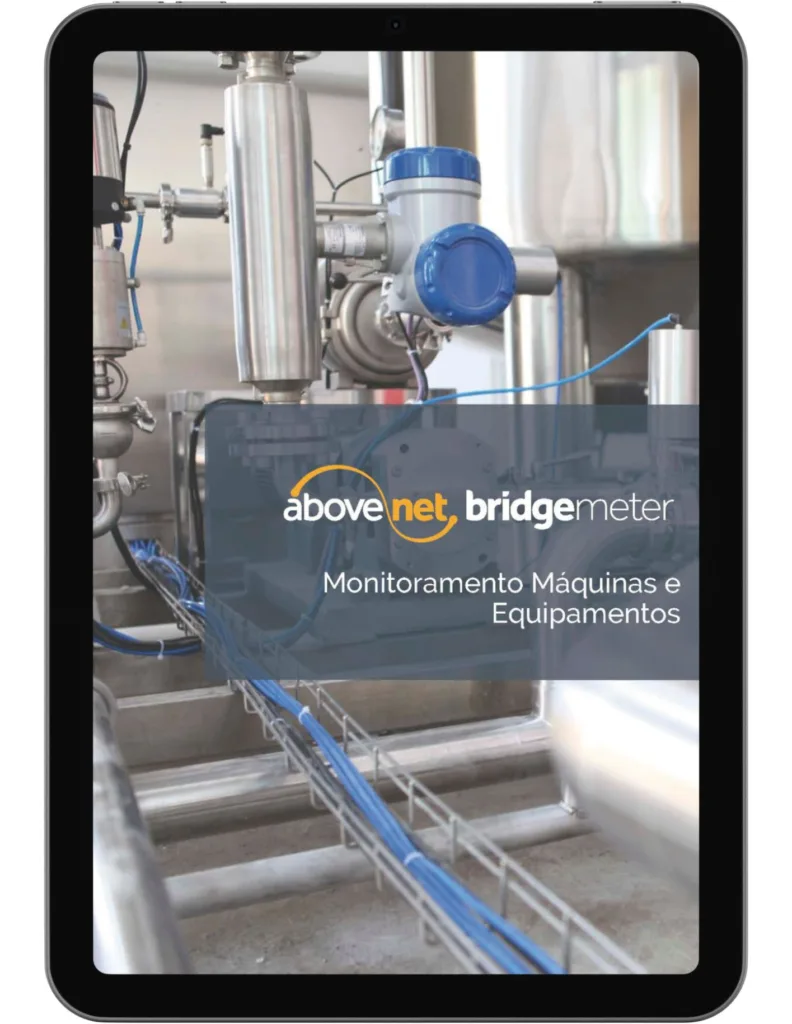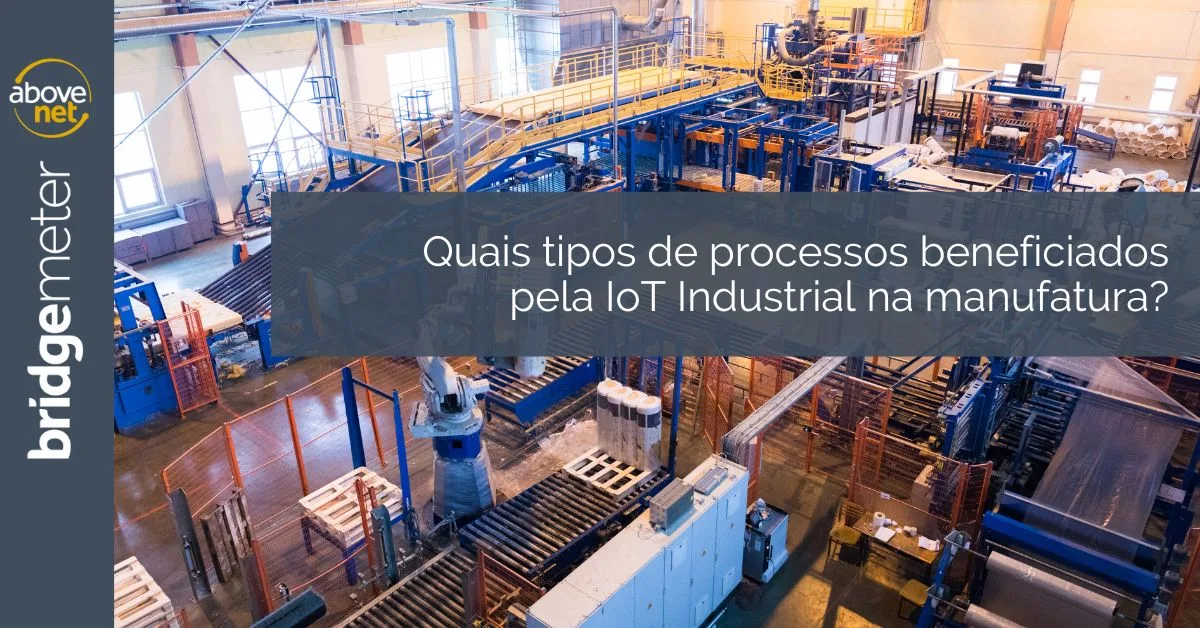A Internet das Coisas Industrial (IIoT) emergiu como uma força transformadora nos setores com aplicações críticas, revolucionando a maneira como as empresas operam, monitoram e otimizam seus processos de produção. A implementação da IIoT nos processos não é mais uma opção, mas uma necessidade urgente, impulsionada pela constante busca por eficiência operacional, redução de custos e aumento da competitividade no mercado global.
A Transformação Digital na Indústria
A capacidade da IIoT de conectar máquinas, dispositivos e sistemas permite a coleta e análise de dados em tempo real, oferecendo insights valiosos que podem levar a melhorias significativas na eficiência, produtividade e sustentabilidade. Através da automação e inteligência fornecidas pela IIoT, as indústrias podem alcançar um nível de precisão e controle sobre seus processos de produção que era inimaginável há apenas uma década.
Além disso, a incorporação da IIoT nos processos industriais viabiliza o monitoramento contínuo e preditivo de equipamentos. Isso possibilita detectar antecipadamente possíveis falhas ou ineficiências, prevenindo que se transformem em problemas mais graves. Essa abordagem não apenas diminui o tempo de inatividade e os custos relacionados à manutenção corretiva, mas também estende a vida útil dos equipamentos e assegura a segurança dos colaboradores.
Vale ressaltar que a IIoT é apenas um passo rumo a transformação digital e que suas aplicações são infinitas com ganhos muitas vezes ainda não aferidos em diversos segmentos por essa multiplicidade. Independente disso, a IIoT transforma e revoluciona o setor por onde passa oferecendo oportunidades sem precedentes para eficiência e redução de custos contínuos como veremos nos exemplos abaixo.
Tipos de processos que podem ser otimizados com IIoT na manufatura
1) Controle de Processos
Envolve a vigilância e gestão de quaisquer variáveis críticas de processos, tais como, tensão, corrente, temperatura, pressão, vazão, e muitas outras com o objetivo de assegurar a operação eficaz e segura de máquinas e sistemas industriais. Por meio do monitoramento IIoT inteligente, sensores conectados capturam dados em tempo real dessas variáveis, permitindo uma análise precisa e contínua do desempenho do processo. Com algoritmos inteligentes e análise preditiva, o sistema pode identificar padrões, anomalias e tendências, oferecendo insights e alertas valiosos para otimização e prevenção de falhas. Além disso, a integração com equipamentos e sistemas de controle automatizados de borda possibilita ajustes automáticos e intervenções remotas precisas, garantindo uma operação mais eficiente, confiável e segura.
2) Engenharia e Manutenção de Equipamentos
Compreende a gestão completa da vida útil de máquinas e equipamentos industriais, desde sua instalação até a inspeção, manutenção e reparo, visando garantir um funcionamento eficiente e prevenir falhas. Através do monitoramento IIoT inteligente, é possível coletar dados em tempo real sobre o desempenho e a condição dos equipamentos, permitindo uma análise proativa das necessidades de manutenção. Algoritmos avançados de análise de dados podem identificar padrões de desgaste, sugerir manutenções preventivas e prever possíveis falhas antes que ocorram, reduzindo o tempo de inatividade não planejado e aumentando a confiabilidade operacional. Dessa forma, a engenharia e a manutenção de equipamentos se tornam mais eficazes e eficientes, garantindo uma operação contínua e segura das instalações industriais.
3) Gestão de Emissões e Poluentes
Engloba uma série de procedimentos destinados a controlar e minimizar as emissões de gases, efluentes líquidos e outros poluentes nocivos ao ambiente. Isso envolve o monitoramento e gestão de uma variedade de variáveis críticas, tais como turgidez, pH, nível de cloro, CO2, incrustação de membranas, entre outros. Utilizando sistemas de monitoramento IIoT inteligentes, é possível coletar dados em tempo real dessas variáveis, permitindo uma análise detalhada do desempenho dos processos de controle de poluição. Com algoritmos avançados de análise de dados, é possível identificar padrões de emissão, avaliar a eficácia dos sistemas de filtragem e tratamento de efluentes, e otimizar o desempenho das tecnologias de redução de emissões. Ao integrar tecnologias de ponta com práticas de gestão ambiental, a gestão de emissões e poluentes torna-se mais eficaz e sustentável, contribuindo para a preservação do meio ambiente e a conformidade regulatória.
4) Gestão de Infraestrutura e Climatização
Abrange uma série de procedimentos destinados a controlar e otimizar a infraestrutura de edifícios e instalações industriais para garantir um ambiente seguro, confortável e eficiente. Isso inclui o monitoramento e controle de variáveis como umidade, temperatura, abertura de portas e docas de carga/descarga para garantir a eficiência dos sistemas de refrigeração e aquecimento. Além disso, o monitoramento de torres de refrigeração é essencial, com variáveis importantes como temperatura da água, tensão e corrente sendo monitoradas de perto. Paradas inesperadas desses equipamentos de infraestrutura podem resultar em interrupções significativas nas operações e até mesmo danos aos produtos e equipamentos sensíveis ao calor. Portanto, o monitoramento contínuo dessas variáveis é crucial para identificar e resolver problemas antes que causem impactos negativos. Ao utilizar sistemas de monitoramento IIoT inteligentes, as empresas podem obter insights em tempo real sobre o desempenho da infraestrutura e implementar ações corretivas de forma proativa, garantindo uma operação contínua e eficiente.
5) Integração e Interoperabilidade de Ativos e Supervisórios
Este campo abrange a implementação de uma arquitetura otimizada para o monitoramento de processos industriais, aproveitando tecnologias como controladores lógicos programáveis (PLCs), sistemas de supervisão e aquisição de dados (SCADA) e robótica. A melhoria da interoperabilidade é fundamental para garantir uma comunicação eficaz entre esses sistemas, permitindo a coleta e análise de dados e eventual necessidade de intervenção remota em tempo real de maneira integrada. Sistemas de telemetria e monitoramento remoto desempenham um papel crucial nesse processo, oferecendo uma arquitetura unificada para acessar e gerenciar ativos remotos de forma eficiente, permitindo a integração entre PLCs e sistemas SCADA de forma transparente e mais abrangente. Essa interoperabilidade aprimorada não apenas aumenta a eficiência operacional, mas também oferece maior visibilidade, flexibilidade e controle sobre os processos industriais, resultando em uma tomada de decisão mais informada e proativa.
6) Gestão de Energia
Esta área abrange uma série de processos voltados para otimizar o uso de energia em ambientes industriais. Isso inclui a análise detalhada do consumo de energia, monitorando variáveis importantes como demanda, voltagem, corrente elétrica, e subsistemas como de backup de baterias e geradores. Além disso, a implementação de sistemas de energia eficientes é essencial para reduzir desperdícios e maximizar a eficiência operacional. A integração de fontes de energia renovável, como solar ou eólica, também desempenha um papel importante na busca por uma operação mais sustentável e eco-friendly. Essa abordagem integrada não apenas ajuda a reduzir os custos operacionais, mas também contribui para a redução da pegada de carbono e para a sustentabilidade ambiental a longo prazo.
7) Padronização e Conformidade Regulatória
Processos para garantir que as operações industriais estejam em conformidade com normas e regulamentos nacionais e internacionais, incluindo normas de segurança, ambientais e de qualidade.
8) Integração de Processos para Automação
Envolve o desenvolvimento e manutenção de sistemas integrados que facilitam a comunicação e coordenação eficiente entre diversos processos e departamentos em ambientes industriais. Uma vantagem significativa dessa integração é a automação de determinados processos, como a emissão de solicitação de ordens de serviço ou de compra, durante o desdobramento de falhas ou detecção de anomalias confirmadas pelo time de manutenção em campo. O uso de uma plataforma de IIoT inteligente integrada, que permita uma resposta rápida e precisa às necessidades operacionais, aumenta a eficiência, reduz o tempo de inatividade e torna o processo 100% digital.

Aplicação
Evite Interrupções não planejadas com Monitoramento de Máquinas e Equipamentos
O catálogo de Monitoramento de Máquinas e Equipamentos mostra como o Bridgemeter oferecer monitoramento preditivo inteligente e controle remoto de máquinas e equipamentos, aprimorando a eficiência e a produtividade em sua planta industrial, ao mesmo tempo em que reduz riscos e custos de manutenção.
Leia também:
Eficiência Energética na Indústria: A Importância Crescente do Monitoramento Inteligente
O que é gerenciamento de infraestrutura de data center (DCIM)?



